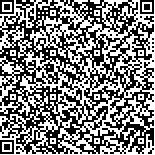下载中心
优秀审稿专家
优秀论文
相关链接
摘要

在从雷达估测森林生物量时,经常遇到的一个问题是地形对雷达信号的影响。地形使得雷达波的入射角度改变,使每个雷达图像像元所包含的地表面积改变,由于地面的起伏,植被本身的结构也不同,纠正这种由地形而不是植被类型引起的雷达图像的变化是一个很复杂的问题,除了需要高质量的地形数据外,还必须理解植被雷达信号随地形变化的规律。 提出一种可用来模拟森林及其它植被处于山坡上的雷达后向散射模型。结合DEM数据,模拟的结果可用来进行雷达图像的地形影响纠正,如果多极化或多波段图像存在,通过雷达模型可用从一种极化推导出的地形信息来纠正其它极化的图像数据。
A common problem encountered in biomass estimation from radar image is the terrain effects appeared in radar images. Topography changes the local radar incidence angle, determines the surface area to be illuminated by a image pixel. In addition,the underlying terrain influences the spatial structure of vegetation layer.It is a complex task to correct or reduce this unwanted fluctuation in radar backscattering due to topography. In general, both high-quality digital elevation model (DEM)and the dependence of backscattering of various land covers on topography are required.The radar backscatter model introduced in this paper simulates radar backscattering from vegetations on various slopes. The backscattering-slope relationships derived from simulation, and a DEM forms the basic for a model-based radar terrain effect correction method. If the multi-band or multi-polarization radar data exist, model simulation can help to infer the topographic information from one channel of radar image, and then use it to correct other channels.

